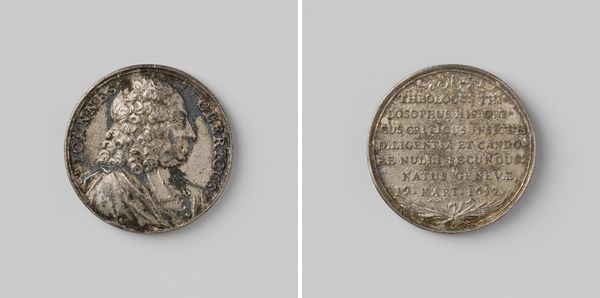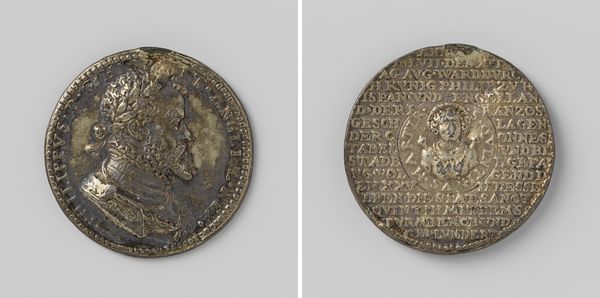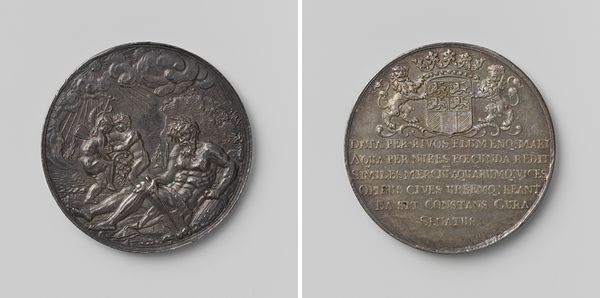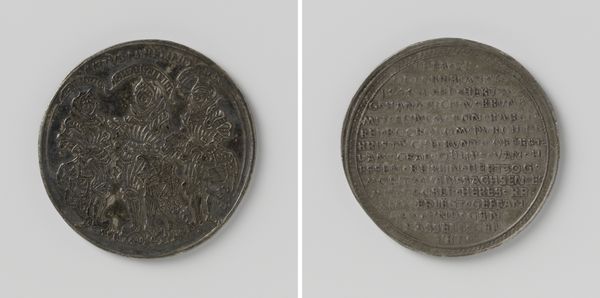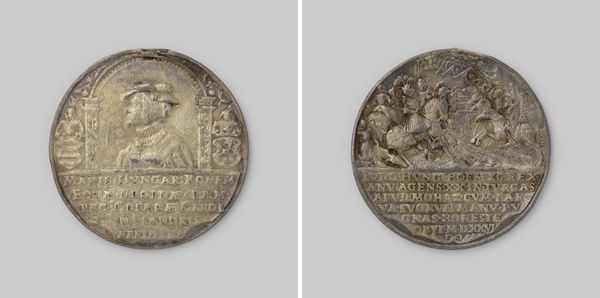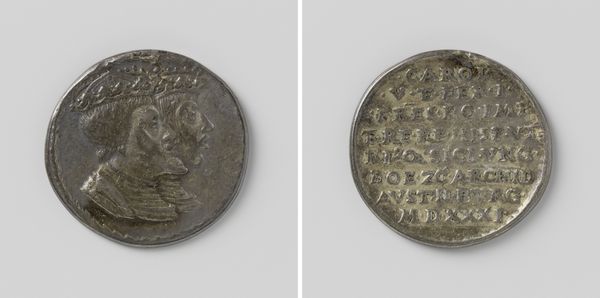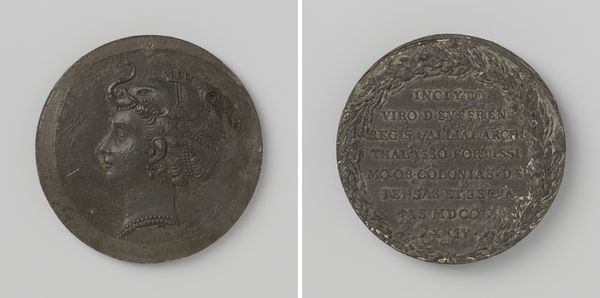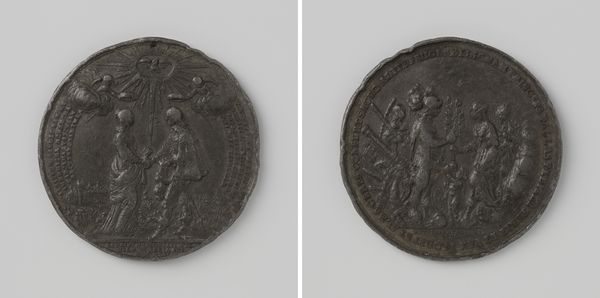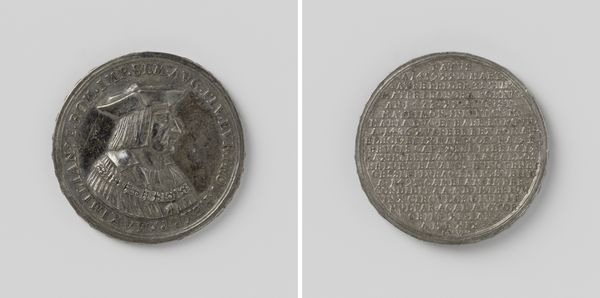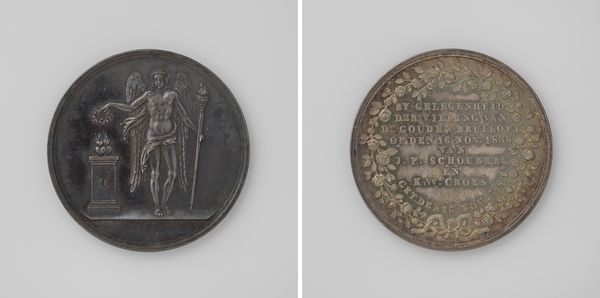
Coenraad Hendrik Cramer aanvaardt het muntmeesterschap van Gelderland, penning aangeboden aan de Staten van Gelderland 1714
0:00
0:00
metal, relief, engraving
#
baroque
#
dutch-golden-age
#
metal
#
sculpture
#
relief
#
carved
#
history-painting
#
engraving
Dimensions: diameter 3.6 cm, weight 23.69 gr
Copyright: Rijks Museum: Open Domain
Curator: This medal from 1714 depicts Coenraad Hendrik Cramer accepting the post of master of the mint for Gelderland. I'm interested in its themes. Editor: Right. So, Coenraad Hendrik Cramer aanvaardt het muntmeesterschap van Gelderland, penning aangeboden aan de Staten van Gelderland, by Laes Rinties Benningh. It's made of metal and from what I can see, through relief and engraving techniques. There's a stately, official feel to it. The inscription adds to that seriousness. How do you interpret this work beyond that initial feeling? Curator: This piece is not just a record of an appointment, it's an assertion of power and legitimacy. The imagery – the allegorical figures, the carefully inscribed Latin – speaks to the visual language of authority. What statements were the artist and the patron making through this piece? Editor: I see what you mean. So, the use of allegorical figures is more than just decorative, they're meant to connect Cramer's appointment to ideas like justice or prosperity? How much does its use of Latin situate it in a wider culture of governance at the time? Curator: Precisely! It’s tapping into a classical tradition to project an image of stability and wisdom. Think about the socio-political landscape of the Dutch Republic at that time. Medals like these were a form of propaganda, designed to solidify power. But it also limits the understanding of those outside the governance circle. Can we really interpret it in our current societal conditions? Editor: That makes sense. The medal is not just a commemoration, but a carefully constructed statement about power and governance. I’m seeing a complex layering of meaning now. Curator: Indeed! It prompts us to question: whose stories are being told, and whose are being erased? That's one powerful question we should continue to investigate within historical works. Editor: That's a really useful insight. It definitely opens up more questions than answers, but it helps contextualize it.
Comments
No comments
Be the first to comment and join the conversation on the ultimate creative platform.
